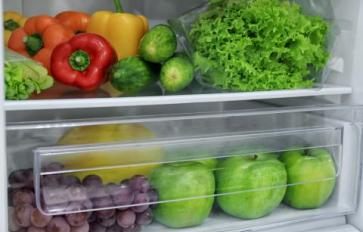
Do you know that 40% of all the food produced in America is wasted? It is just thrown away to rot! For the last several years I have been trying to spread awareness about how much food is thrown into the trash when there are so many hungry people everywhere. Almost half of all of the food produced, in America. Over 48.1 million people lived in food-insecure homes in 2013 & 2014 while perfectly good food went to the dump. There are many who have been standing up to make a difference for the better and their hard work is working!
I just want to take a minute to break those numbers down so you can understand what an immense amount of waste it is. America is currently throwing away over $160 million worth of food, labor, and materials every year! If you took the amount of waste and stretched it out end to end, it would reach about 720-730 football stadium lengths. Imagine walking into your grocery store and watching almost half of the food on the shelves being thrown out and wasted. Food banks, individuals, and various groups have been working together to bring the amount of waste down while bringing up the number of people who are no longer hungry.
There is so much food that's being discarded simply because it wasn't perfect, or it has a slight flaw or a bump. The thing is, the food still tastes just as good as it might have if it didn't have the blemish. One of the other reasons food goes to waste is due to the sell-by-date. The sell-by and use-by dates are only there to let people know that the product will look and taste the best by the date stamped on the package. It is impossible to guess the actual length of time that an apple will remain safe to eat, as they all break down at their own rate; it is more of an estimated guess based on another apple.
So this waste is the problem but with it comes SOLUTIONS. There are many food banks and soup kitchens that exist to help those who need it. There are non-profits that have been started by community members, churches, schools, etc., such as Feeding America and Food Finders. Feeding America connects unwanted food with those who need it most and distributes the food all across America, while Food Finders is a more local project, but a growing one. These are just two places out there trying to make a difference. What these places do is help to make things easier between those giving donations and those receiving them. Organizations like Feeding America facilitate the process of donors donating food – like supermarkets, restaurants, and farmers’ markets -- and those needing the food -- like food pantries, safe havens, and soup kitchens -- receiving it. They spread awareness and operate on donations. Rescuing Left Over Cuisine is another program dedicated to connecting those with food to donate to those who need it most. Volunteers regularly pick up the food from restaurants and deliver it to homeless shelters and the hungry and homeless out on the street. The volunteers said that 50 pounds of food can feed 40 people. These are everyday people who are working towards making a positive difference in the world. You can go to the website to check out different locations they operate in and volunteer your help, however you can give it. These are just a couple of groups, and there are many more. You may also find some local groups accomplishing similar goals in your area.
People often wonder, “Why don't all of the stores just donate the food themselves, then?” Well here are a few reasons why:
- Concerns about Liability - Some places are concerned that someone will file a lawsuit if they get sick from eating the donated food. This is a common misconception. In the United States, the Bill Emerson Good Samaritan Food Donation Act protects those who are donating food out of good faith from any legal repercussion and frees them of any liability.
- Problems with Logistics – Let's face it: it costs money to do things. It takes a vehicle to transport the goods from point A to point B (and gas for that vehicle), insurance to legally drive those goods, and a place to properly store the items. There's a solution for this problem: Volunteers could participate, donations could be made, and a non-profit can be started to fund the logistics aspects. You can make a difference, too! Check with some of the programs mentioned in this article, or local programs in your area, to find volunteer opportunities for you.
- People are Unaware – Not everyone knows how to go about making these changes, nor do they always have enough time. The solution = spread awareness; you can use your social media platforms, make pamphlets or use any means you can.
- Too Few People are Acting – There is a shortage of people standing up and saying or doing something. This is changing! More and more people all over the world are taking action to stamp out hunger and stop food waste. We could always use more people!!
The other question that often comes to surface is “What can be done to change this?” Now we're talking. There are various things people can reach out and do to make a difference when it comes to such an important issue. Every act -- whether it be large or small -- is one worth making. I always encourage others to start with some deep research. If they don't have the time to search, I will send them reliable resources with the information they desire. So for those of you who can take some time to look around, here are some things you'll want to research:
- Find out about the local food pantries and food banks in your area. Learn where they are, who runs them and how you can help.
- Search and find out if there are currently any non-profits operating in the area.
- Check the statistics for yourself. Dig deeper and see the numbers with your own eyes.
- Check with the grocery stores and restaurants and see who is donating and who isn't.
- Look into who is already out there trying to be the change they want to see and see how you can be a part of it.
- Look into your city laws pertaining to dumpster diving.
Now it's time to step up and begin taking action!
- Write up proposals for the grocery stores and restaurants who you'd like to see donate, and then take it a step further -- print up and provide them the necessary paperwork to help them begin the process.
- Create a call to action! Spread awareness with as many businesses as you can; you have to reach out to teach out.
- If you can participate in helping at a shelter or food bank then go ahead and volunteer. It never hurts to try to start a food drive, either.
There are many things one person can do to cause a ripple effect of good in the bigger picture.
I, myself, have done hours and hours of research. I started dumpster diving (while obeying any and all laws) when I was a teenager. It started with something called Spring Clean Up, which was a time when people of the community would clean out all their old junk and set it on the curb for the garbage collection, with no restrictions or limits on what is set out. During this Spring Clean Up, I would see so many things that looked useful, so I started asking the people if I could check them out and keep the things I wanted. It was like a treasure hunt! I scored a box fan for the old man down the road who didn't have one, tons of books for the library to give away or sell, a vacuum that only needed a new filter for the elderly lady who couldn't get out and buy one, and so on.
This led me to think on a much larger scale, about all of the dumpsters I have seen in one town. This thinking led me to do something then and I continue to do something now. You don't have to jump in a dumpster but you can do something!! Feeding hungry people is an incredible feeling! Step up and see how you can connect with your surrounding community to take a stand against waste and have a positive impact on others’ lives.
Photo Credit: "Fresh Food In Garbage Can To Illustrate Waste" by USDA is licensed under CC BY 2.0


